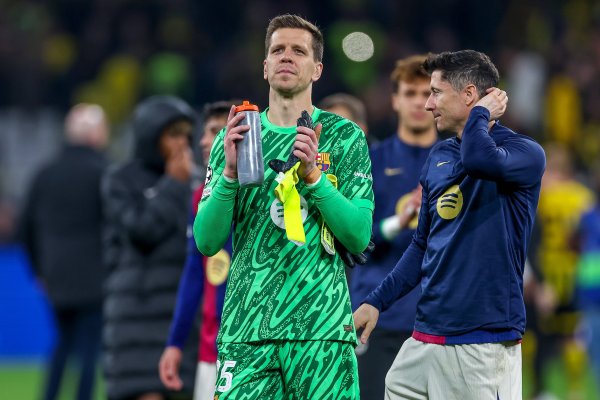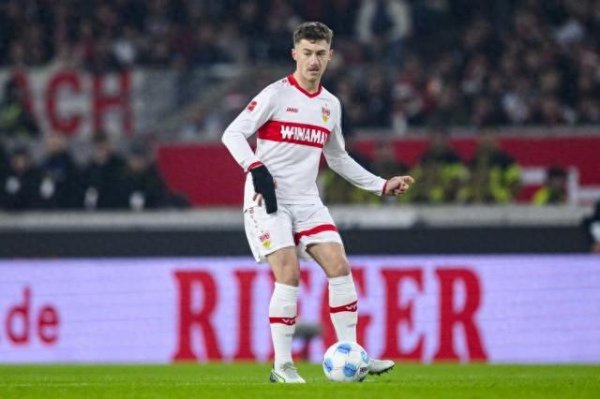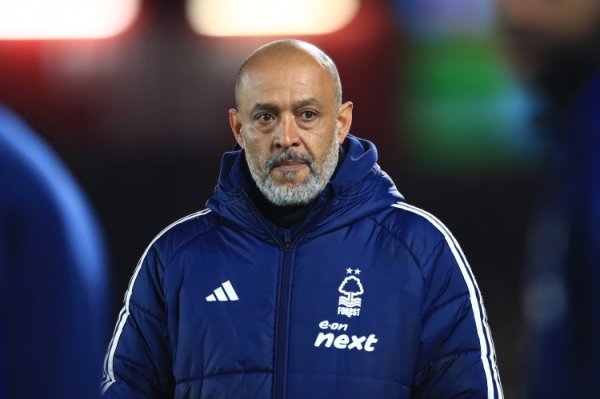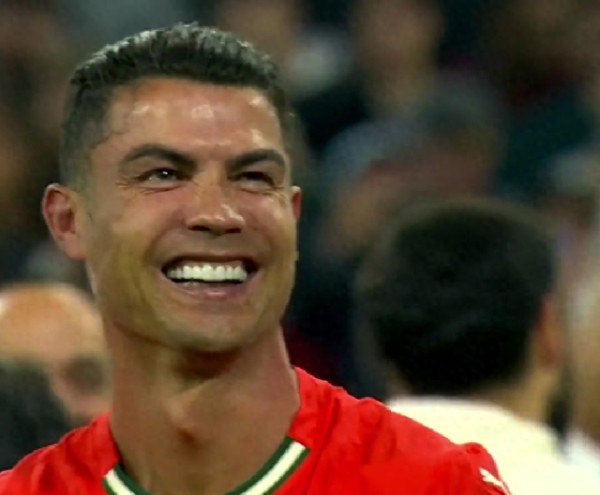HOME > Football
Bichito s transfer to Chelsea is counting down, is there another new certificate in the "fish tank" dilemma?
9:54pm, 8 August 2025【Football】

On August 8, 2025, the Premier League transfer market ushered in key progress: Manchester United winger Bichito Garnacho has reached an agreement with Chelsea on personal terms, and only the transfer fee negotiations are to be finalized. The 21-year-old Argentine international contributed 11 goals and 10 assists to Manchester United last season, but now he has become the focus of the Red Devils' roster cleaning. This transfer storm not only involves the game between the two giants, but also reflects Manchester United's deep management dilemma.
Transfer Game: £40 million becomes a key watershed

According to Romano, Manchester United's price for Garnacho is £50 million, and Chelsea's offer has not yet reached this number. Despite differences between the two sides, the negotiations have entered the final stage. The various recent actions have fully demonstrated that the Blues' signing strategy this summer tends to be "combat power" rather than potential new stars. Behind the dispute over Garnacho's transfer fee is the difference in judgment of the player's value between Manchester United and Chelsea. Manchester United believes that Garnacho's average of 2.3 arc shots in the penalty area and a 38% success rate of key passes last season is enough to support the valuation of 50 million pounds. Chelsea, on the other hand, considered that Garnacho's age (21 years old) and potential risks would need to be lowered to around £40 million.
Manchester United's management dilemma: the double crisis of locker room and strategy

Ghanacho's departure has exposed Manchester United's current three major management problems: the collapse of trust in the locker room
The relationship between new coach Amorin and Garnacho continues to deteriorate. In May this year, Garnacho was excluded from the UEFA Cup final list, and the direct fuse was a controversy about being late in training. Some players revealed: "Amorin criticized his lack of professional attitude in public, but Xiao Qiao believed that this was just a mistake in tactical adjustment." This contradiction made Garnacho gradually lose his locker room support. The
tactical system is mismatched with players

high-pressing tactics in the era of Tenghach are seriously inconsistent with Garnacho's technical characteristics. Data shows that Garnacho's sprint success rate in the Premier League is only 52%, far lower than the average level of players at the same position (65%). Although Amorin tried to adjust after taking office, the results were limited.
Youth-producing ability in youth training declines
If Garnacho leaves the team, there will be few first-team youth training players in Manchester United, and the record of "you must go to every game" in the past 88 years may end. An old Manchester United fan said with pain: "Beckham and Giggs both came from Carrington back then, but now they don't even have a decent youth training coach." Chelsea's considerations: that is, the balance between combat power and future

The Blues' interest in Garnacho is not only the data, but also the ambition to impact the Premier League. The Blues promised to give the main position, which is exactly what Manchester United couldn't provide. In contrast, Manchester United made up their minds to sign Cesco to reorganize the forward line, and Garnacho's tactical value has been greatly reduced.
It is worth noting that Chelsea pursues Xavi Simmons at the same time, but Garnacho has higher priority. A Blues scout revealed: "Simmons needs time to adapt to the pace of the Premier League, and Garnacho can immediately fill the vacancy after Cunha leaves the team." The three major trends in the Premier League transfer market
The "window period" value of youth training players
The negotiations between Manchester United and Chelsea show that the transfer window for players aged 21-23 is shortening. Clubs tend to cash out at the peak of their players' state rather than training them for a long time. For example, when Manchester United signed Garnacho in 2021, the contract included a 5% sale share clause. If the transaction was completed for £40 million, the youth training compensation alone could be recorded for £2 million. The dominant role of the data model

Chelsea's price reduction of Garnacho is not a subjective judgment, but is based on the data model. Its technical department found that Garnacho's "hard battle conversion rate" was only 11% (6 goals came from the cup or against the relegation team), and the average expected goal value (xG) this season was 1.2, but the actual goal dropped to 0.8.
Pressure on financial sustainability
Manchester United will pay about £150 million in salary and debt interest this summer. If Garnacho leaves the team, he can recover at least £25 million and free up salary space. This financial pressure forces the club to balance athletics and business.

Ganacho's transfer is not only a personal choice for players, but also a microcosm of the Premier League transfer market ecology. When club management issues conflict with players' development demands, transfer negotiations become the outbreak of conflicts. For Manchester United, how to avoid the loss of "youth training dividends" and rebuild trust in the locker room will be a key issue in the next season.
How many points do you think Manchester United can score in this wave of operations? Is this another new proof of the "fish tank" theory?
When the spotlight of the grievances of wealthy families goes out, the sweat of the grassroots stadium is still boiling, Xiao Li will reveal the secrets: those secret battles of the stadium that are ignored by the camera, the game of interests behind the "plastic brotherhood", and even... the real football story will always happen after the referee's whistle sounds. Follow the editor and let "Xiao Li" become the "green truth excavator" in your heart!
Related Posts
- Zhan Jun: Sobo should be the most stable core for the Red Army in the new season. The most important thing is to improve the defense.
- 0-1, the former Premier League champion lost to Millwall and suffered 2 consecutive defeats in the English Championship + dropped to 10th place
- One-day Premier League news: Manchester United is accelerating the sale of backup shooters, Slott has a new target to buy defenders
- 22 seats have been reserved for the World Cup: Cape Verde, a small country with a population of 540,000, has advanced! There are 3 seats left in the African region.
- Defeat! Ruben Neves: Jota’s jersey gives me extra strength and the victory is well deserved
- Damn laughing: 1-0 in 90 minutes, Guardiola excitedly kissed the fourth official, and Manchester City was beaten 3 minutes later
- Infantino: Serie A is the league in my life, I will always pay attention to A
- 2025.08.31 Paris Football Club VS Metz Event Recommendation Analysis
- Austrian roster: Alaba leads, Sabize, Lemel, Anau, and Dansor are selected
- Real Madrid double stars Mbappe and Vinicius are in a crisis of self-confidence
Hot Posts
- Zhan Jun: Sobo should be the most stable core for the Red Army in the new season. The most important thing is to improve the defense.
- 0-1, the former Premier League champion lost to Millwall and suffered 2 consecutive defeats in the English Championship + dropped to 10th place
- One-day Premier League news: Manchester United is accelerating the sale of backup shooters, Slott has a new target to buy defenders
- 22 seats have been reserved for the World Cup: Cape Verde, a small country with a population of 540,000, has advanced! There are 3 seats left in the African region.
Recommend

He once led the team to win the World Cup! Post: Many celebrities in England hope to posthumously award the title of Sir Bobby Moore

Romano: Szczesni will renew his contract with Barcelona, who firmly believes he is a member of the team s roster next season

DeepSeek rated the ten best teams in history outside of the top five European leagues: Ajax tops

Returning to Stamford Bridge for the Legends Game! Joe Cole: It’s great to be back and let’s catch up with each other.

Sun: Manchester United s locker room was very frustrated, and he didn t expect the landslide to come so quickly this season

As: Real Madrid intends to strengthen the midfield, and has considered Zubimendi and Stiller

The Blues Battle in Newcastle touches the forest nerves! Nuno: Worrying that my players scores affect their concentration

7-5 win night! Ronaldo scored a record + kissed the coach, Portugal scored 2 goals in 1 man and scored Yamal